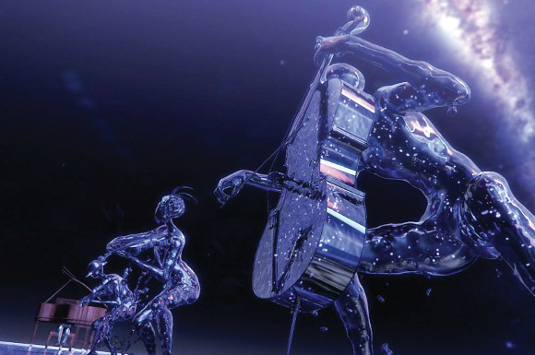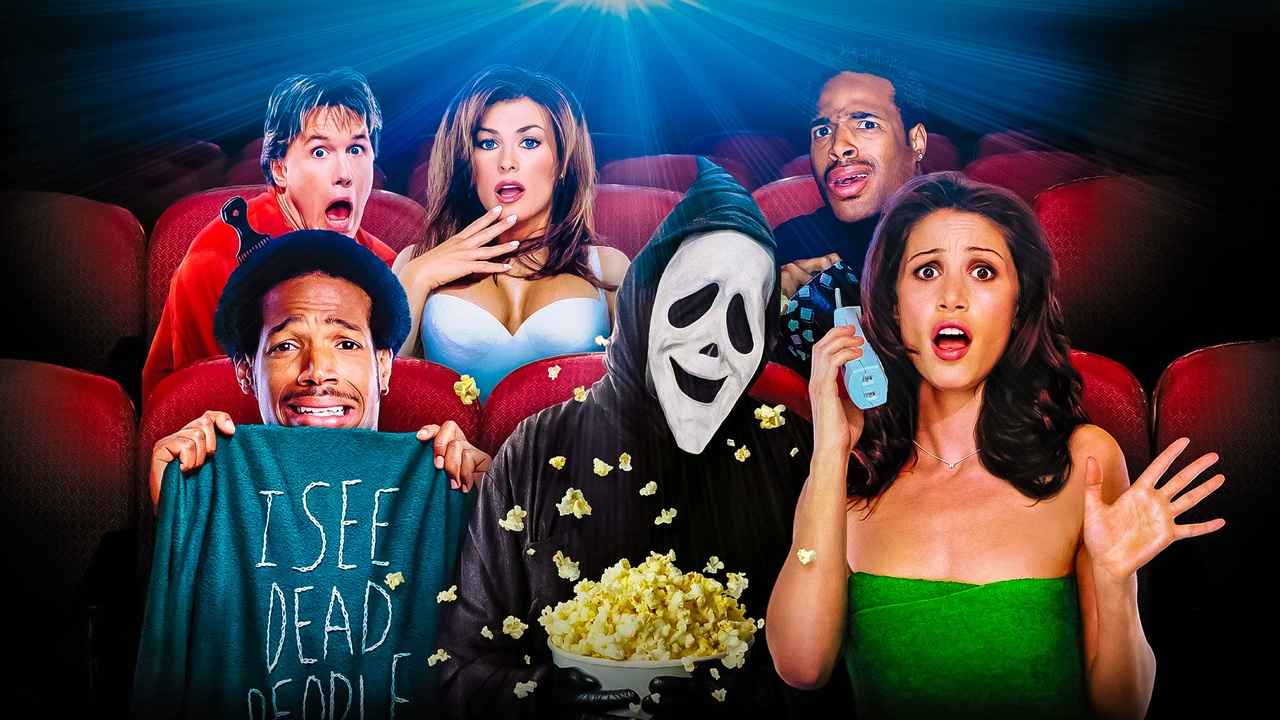Behind the scenes of Hidetake Takayama’s Express
Director Kohta Morie reveals the story behind his emotional music video for Express by Hidetake Takayama.
When I listened to the songs of Hidetake Takayama on MySpace in 2009, I became a big fan. I wanted to see him, but he wasn’t doing any live shows at that time. I chased him down for a year, but never got any information about him except his name and music, then I heard that he was going to do a gig at a CD shop to promote his first album. I got really excited, and headed off to the venue. I had many questions, but I still didn’t know what he looked like or how old he was. Arriving at the shop, there he was, wearing an Adidas jersey, with short hair and a friendly smile. I got who he was at first glance. Once he touched the piano, the mood changed dramatically. The music took me away from the time, place and everything. I couldn’t even move.
A year passed. I had been working on many other CG projects, one of which won an award at a Japanese CG festival. Then, I received a message from Takayama that would change my future: “Do you want to make a music video with me?” Of course, I answered, “Yes!” in a flash.
This was the beginning of my struggle to make Express. I had been working as an animator for years, but never as a director. Everything was new to me. Not only as a director, but also, I was still working as a chief animator at Transistor Studio in Tokyo. My schedule was packed with other works, but my desire to work with Takayama was overwhelming.
What we did right
1. We made it from the very beginning
We had already made four other fully CG music videos, but every time there was a director. Even though we made every single shot, the work was all attributed to the directors in the end as far as the audience was concerned. Like VFX studios in LA, the studios that have their original contacts can survive, but the rest can’t. We could have stayed in this position, being used by other companies, even though we had enough skill to become independent.
When the project began, I was worried about whether we’d made the right decision to finish everything else in the studio, because there was no studio that had accomplished what we were doing before. At the same time, I really wanted to challenge the notion that there was a border between bigger studios and smaller studios, and to possibly get out of the situation where we felt we were being used. Everything is very easy if you just use the technology, but it’s harder to be more creative. We actually made it, and we showed the potential to be creative if you really have the desire, and you keep working hard.

2. The crew worked well together
On each of the music videos we’d worked on before, something would challenge us. For example, to finish one of the music videos, we stayed at the office and couldn’t go back home for about two months. It was very tough work for everyone, but we made stronger relationships of mutual trust through the circumstance. When I got the offer from Takayama, we had already built up the skills needed to make music videos.
Three of the major contributors to the project were Junichi Akimoto, Takahiro Shibano and Hiroyuki Ito, who had been working together for the previous two years.
Daily design news, reviews, how-tos and more, as picked by the editors.
Akimoto specialises in Houdini. He started using it when he was 18 years old, and now writes about it every month in the Japanese CG magazine CG World. He did everything in Houdini that’s hard to accomplish in Maya such as the liquid orchestra (called ‘water men’) and made the processes smoother.

Shibano did most of the lighting, rendering and compositing. These jobs are better for methodical people who can pay careful attention all the time. Since the director tends to correct the details of the colour, light and shadow, Shibano’s job really needs to meet the director’s demands.
Ito worked on many different things such as building a pipeline tool to connect different software with Alembic, scheduling management of all the shots (of which there were 164), keeping track of progress, and being a great listener whenever I was struggling with something.
These three members of the team have great skills for certain, but more important than that, I’d already been working with them for two years, so I was easily able to maximise their skills. The other crew members also helped with secondary animation, error checking and compositing. When the deadline was looming, I was upset that the project would soon be over, and they asked me if there was something they could do to help me. That made me really happy. It was interesting to see their true characters come through this project in the end.
3. We made friends with the client
When I came up with the story for the video that would eventually be used (there had been other ideas), I hurried to see Takayama to show him the image board. My mind was full of worries about whether he would like it. Contrary to my fears, he had a boyish grin when I showed it to him. His eyes said, “Very good.” We were connected to each other at the time. Even though I didn’t give him any details of the story, he understood what I was proposing, and I knew what he wanted at the same time. Now that the project is over, we are still hanging out and drinking with him and his band members. It’s an honour to get such a great friend through this project, and this must be the most important evaluation.
We also made friends with Mr JFK, a capable producer that works in the same office as Takayama. He’s responsible for 2.5 million CD sales (selling over 10,000 CDs is said to be very good in Japan), and he gave our entire studio access to Takayama’s concerts any time, anywhere, forever.

What we did wrong
1. We had to animate by hand
We used HIK in Maya 2012 for the character setup because it was supposed to be able to use the motion capture later. I visited Carnegie Mellon University’s website to check whether there was a free database of motion capture to use for a simple walk animation, but I found nothing. For that reason, all the animation in the video is animated with keys.
Also, I tried to use the hair system in Maya 2012 to automatically move the boy’s hair, but the result wasn’t what I wanted. So all the hair was animated by key animation too.
2. We struggled to synchronise the video
I synchronised the video to the music perfectly, down to the keys of the piano synchronising to the piano sound. I tried to make the synchronisation automatic using the CHOP tool in Houdini to move the keys to the sounds automatically, but I failed. The reason was the music video was 15fps, so it dropped frames, which spoiled the final look.
3. I couldn’t see my family
Abroad, in general, the first priority is family, but in Japan, work is the most important priority. I got married during the project, and I couldn’t see my wife for three weeks. To make it worse, we had the wedding one week before the deadline. I totally depended on my wife for the preparation, and met her just before heading to the wedding hall. She supported me a lot because she totally understood that this was my first and most valuable work as a director.

Lessons learned
It was interesting to see unexpected things happen, and discover how much I could challenge myself. I think there are two kinds of people to accomplish one project. The one is the creator, the other is the audience. We can’t finish and evaluate the project without these two. I didn’t want to make a meaningless video.
Sadly, there are tons of videos that are by the creators for the creators, but this makes no sense to the audience. Pictures and images are tools to move people and let them think. They even have the possibility to change their lives. Think about when you play catch. What would happen if the players didn’t try to catch the ball? We used high technology for this project, but the audience still get the details. That’s why I focused on the story only.
On the other hand, the fundamental skills supported this project a lot too. I’ve been learning character animation, rigging, camera work and layout for six years. This combined knowledge made it possible to accomplish this one big project.
VITAL STATISTICS
Project: Express feat. Silla (múm)
Studio: Transistor Studio
Format: Music video
Client: GOON TRAX/ Media Factory, Inc.
Time taken: Six months
Team size: Two full-time, one support, 11 at peak
Software used: Maya, Houdini, ZBrush, Nuke, After Effects, Photoshop
Release date: 30 October 2012
Kohta Morie is a 3D animator and director, and the author of Animation Style +. He was born in Matsue, Japan, and graduated from the Tokyo Multimedia College. He loves his wife much more than CG
Discover the best 3D movies of 2013

The Creative Bloq team is made up of a group of art and design enthusiasts, and has changed and evolved since Creative Bloq began back in 2012. The current website team consists of eight full-time members of staff: Editor Georgia Coggan, Deputy Editor Rosie Hilder, Ecommerce Editor Beren Neale, Senior News Editor Daniel Piper, Editor, Digital Art and 3D Ian Dean, Tech Reviews Editor Erlingur Einarsson, Ecommerce Writer Beth Nicholls and Staff Writer Natalie Fear, as well as a roster of freelancers from around the world. The ImagineFX magazine team also pitch in, ensuring that content from leading digital art publication ImagineFX is represented on Creative Bloq.
